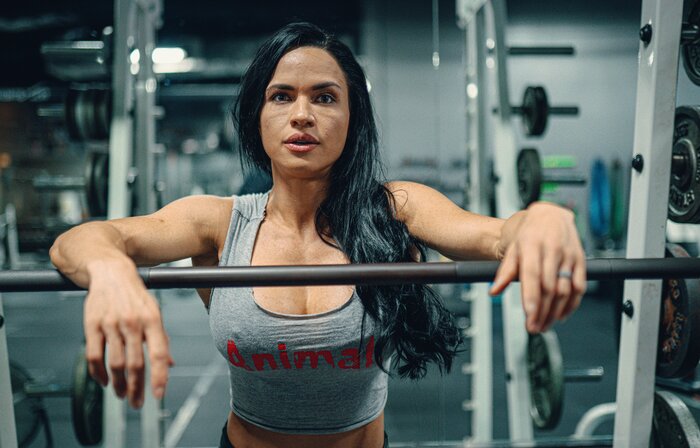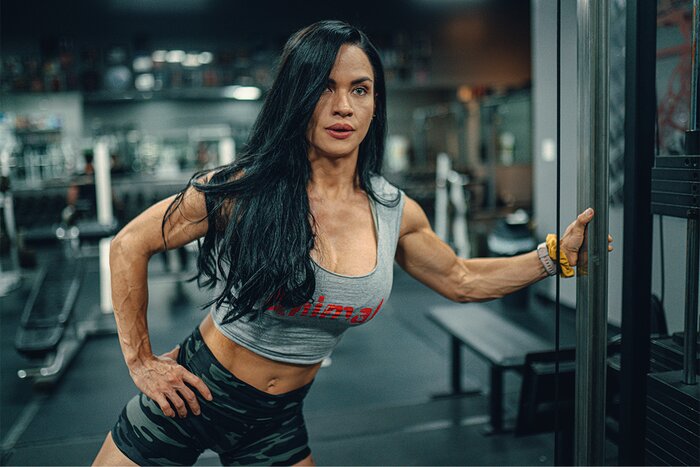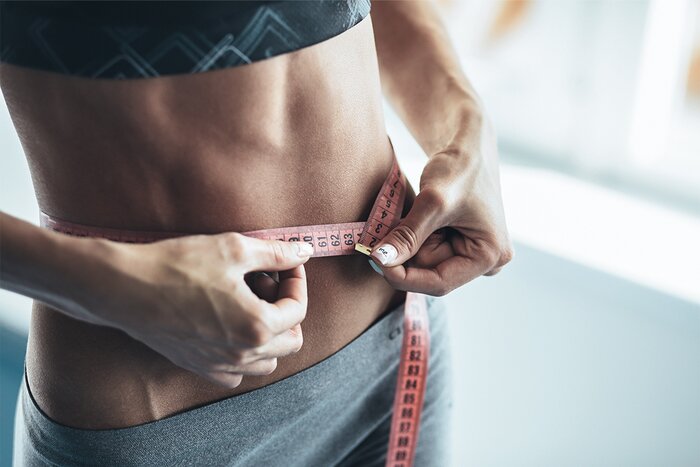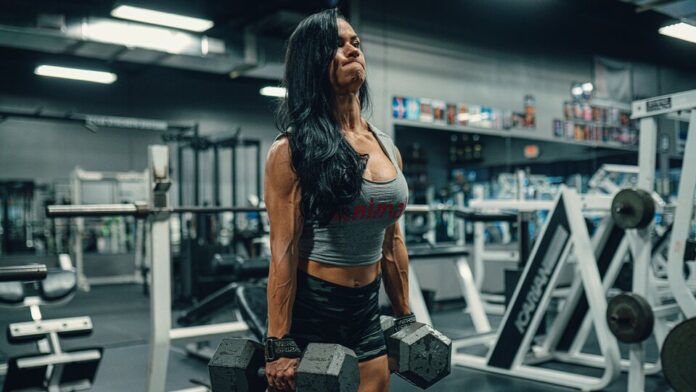[ad_1]
Small waist, round booty, and toned legs—do I have your attention? Over the past decade, more and more women have been embracing the weight room, which I, for one, think is awesome. Even so, there are still many misconceptions surrounding weight training for women. I am about to shine some light on the top three misconceptions that I hear continuously when working with female clients.
Table of Contents
Misconception 1: Lifting Heavy Will Transform You into She-Hulk
When the typical client comes to me looking to change her physique, her goals are to lose body fat, gain overall tone, and shape her glutes. Areas of concern include the abdomen and thighs. This is usually how the conversation about these goals starts: “I want to lose this [points to stubborn area of body], but I don’t want to lift heavy and bulk—just tone and lose fat.”
I fight every urge to keep myself from cringing visibly. It’s not her fault she has the misconception that lifting heavy will suddenly transform her into She-Hulk. It’s 2021 and we’re still being bombarded with countless juice cleanses, detox teas, fad diets, creams, lotions, and potions all promising to help women drop inches, lose fat, shed X number of pounds, and “tone” trouble spots. Next time you’re standing in line at the grocery store, check out the coverlines on the women’s fitness magazines. “Burn Fat in Just 10 Minutes,” “8 Moves That Tone Every Zone,” “13 Ways to Burn Fat Fast.” There will be no mention of heavy resistance training accompanying the cover photo of a beautiful, fit model. It’s no wonder this misconception is still so prevalent.
The truth is, the best way to change your physique and create the curves that most women covet is to lift progressively heavier weights with a combination of compound and isolation movements. Put that on the cover of a magazine, and maybe we can start getting rid of this misinformation once and for all. Weight training will not turn you into a big, bulky bodybuilder. What will make you bulky is eating excessive calories, and even then, it will most likely be due to a higher body fat percentage, not excessive muscle.

Building muscle is a slow, long-term process—one that many women spend years trying to achieve, myself included. I also have to mention the slew of other positive benefits that weight training offers. It increases skeletal strength, which in turn reduces the risk of osteoporosis. It creates stronger connective tissue and joint stability that helps prevent injury. It increases functional strength for everyday activity, because why make two trips to carry groceries from the car when you can do it in one? Last but not least, it improves confidence and self-esteem.
I encourage my clients to keep a training log when I program a training split. The goal of this log is to keep the client improving from week to week, whether that improvement comes from an increased load, better execution, or adding a few reps. Not only does the log keep the client accountable, but it helps me see the progression as well as where in the program improvements are being made. For years, I made the mistake of spinning my wheels by blindly going into the gym with no plan and no way to track my progress. My wheels were spinning, but they sure weren’t growing! So, if you’re after that slim waist and those shapely glutes, embrace weight training. Take it seriously and make it a priority.
Misconception 2: Lifting Lighter Weights for Higher Reps Helps You “Tone Up”
After I get my clients on board with the idea that weight training is the key to changing their physique, we encounter misconception number two. “Don’t I need to lift lighter weights for more reps to tone muscle?” Mainstream media encourages women to use limited resistance, such as light dumbbells and band exercises, with no mention of effort or intensity. Such light training loads are significantly below what you need for muscle adaptation and growth. For that, you need a weight that can really challenge you and that puts you in the range of 6-20 reps. The kicker is that those reps need to bring you to a point close to muscular failure. That means HARD sets!
Women need to train intensely enough to cause adaptations in the muscle. Insufficient stimulus will result in minimal benefits; working sets should be taken to or near the rep maximum for each set.

Let’s touch on effort and intensity. What does “hard sets” mean? It means you’re going to have to push yourself out of your comfort zone. Say, for example, you have a leg press programmed into your training with the first work set of 10-12 reps. You do your warm-up sets and work up to a weight that’s heavy enough to achieve the desired reps. Now, what do those last reps look like? Were they just as easy to complete as the previous reps? Did your speed slow down because you were fighting for the last few reps? Or did your last rep feel and look as easy as your first one? These are the questions I ask my clients to assess their effort level.
More often than not, the client is falling within the prescribed rep range but not putting forth the effort that she needs to cause the adaptations required to build muscle. Since I work with clients online exclusively, I find video submissions help me assess effort level and intensity. Record your hard sets and see if your last reps are slowing down and if you are having to grind to complete them—those are the reps that are going to change your body. Also, make sure your form looks the same as your first rep. You want to train hard and stay safe.
Misconception 3: Certain Body Parts Can Be “Spot Reduced”
Once a client is weight training and learning to push past comfort zones with her sets, we see her body taking on more shape. The third misconception, spot reduction, usually appears at the next check in. The client is seeing results, but that stubborn area is still holding on for dear life with minimal changes. She may ask me what exercise she can do to get rid of the fat in her arms, thighs, or lower abdomen. I’m sorry to be the bearer of bad news, but exercising those stubborn areas will only strengthen the muscle responsible for the movement. It won’t have a significant impact on the amount of fat stored there.

Ultimately, losing that stubborn fat comes down to the basic principle of how many calories you consume versus how many calories you expend. You can do as many crunches as you want, and it will strengthen your abdomen, but it will not make your abs more visible unless you are taking other steps to reduce overall body fat.
Even when we have our nutrition, training, and cardiovascular program down to a T, we can’t influence where our body draws the fat from to be burned. Everybody is unique in that we have a pattern of where we lose body fat from first and where we lose it from last. This is heavily influenced by genetics. For me, the last place I’ll lose body fat is my thighs and glutes, but you can bet that’s the first place I’ll regain it. (Thanks, mom!)
Don’t let that discourage you. Sticking with the plan that’s right for your goals will reduce overall body fat, and with time, you’ll start to notice a reduction in those specific areas of concern.
In a world flooded with information that can lead you off course, let these takeaways guide you back to your goals:
- Weight training is the most optimal way to change your physique.
- Don’t be afraid of lifting heavy. Remember that effort and intensity are of the utmost importance.
- Localized fat loss through targeted exercise is a myth. Focus on overall body fat reduction.
[ad_2]
Source link












